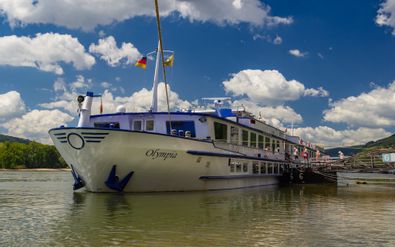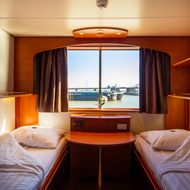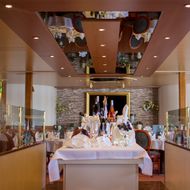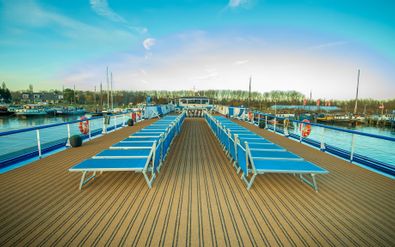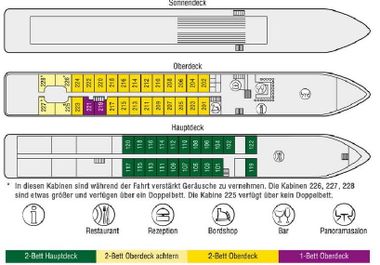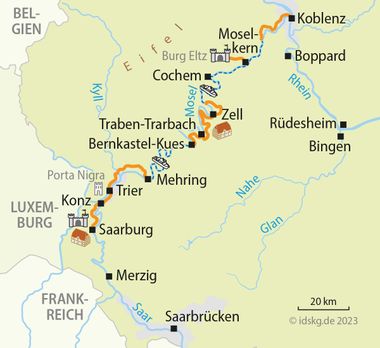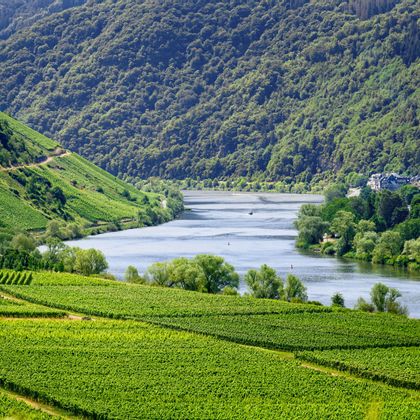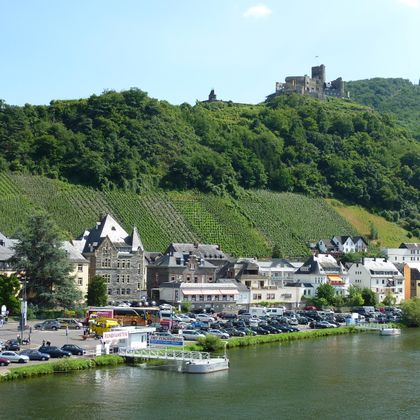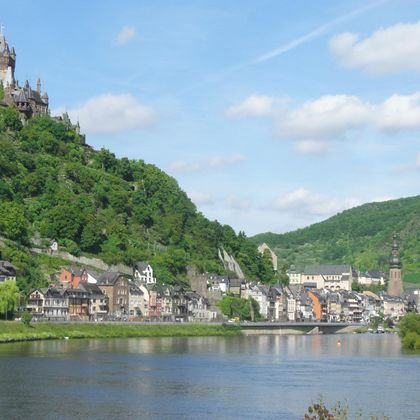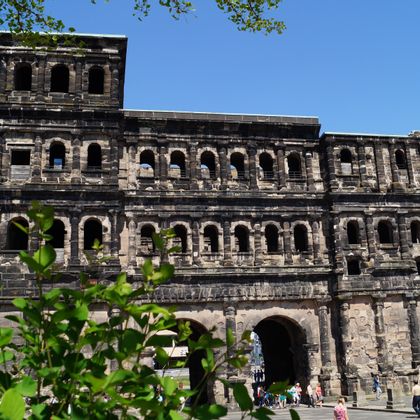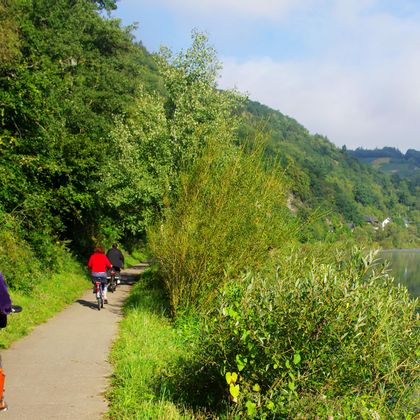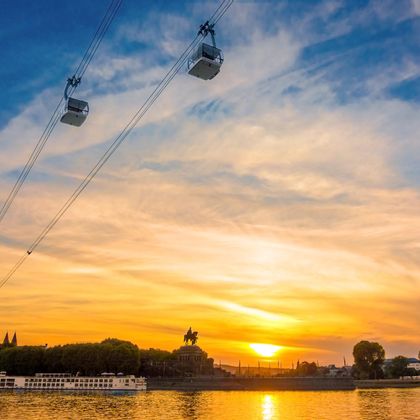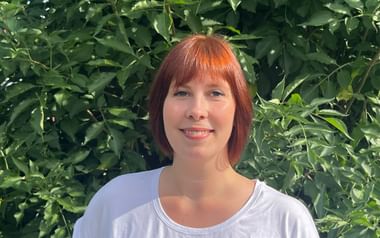Please find more information about the Saar - Moselle boat & bike tour below. If you have any further questions feel free to contact us by phone: 0049 - (0)6421 - 886890.
Arrival Saarburg
The pier in Saarburg is about 3 km away from the main station. Detailed information you will receive with your travel documents two weeks prior to departure.
Parking in Saarburg
Unsupervised parking is available for the duration of the bike tour near the landing stage for approximately €25.00 per week/car or near the train station in Saarburg for approximately €10.00 per week. Reservations are not possible and payment is due on site. (as of May 2025)
Lactose-free and gluten-free food
If you require a lactose-free or gluten-free diet, this is possible on board, but there is a surcharge for this, which must be paid on site. Please let us know at the time of booking or at least 14 days before arrival if you require a lactose-free or gluten-free diet.
Embarkation
Embarkation on the MS Olympia in Saarburg and Koblenz is possible from 4:00 p.m.
Luggage
For lack of space please abstain from hard-top cases, storage space is limited.
Optional excursions
If the bike stages and lay times allow, an excursion program will be put together, which can only be booked and paid for on board. Depending on the group of participants, the excursions may be offered bilingual German-English.
Condition of cycle paths
The quality of the bike paths is good The Moselle cycle path usually runs on paved roads without significant gradients.
Available rental bikes
We provide 7-speed gear shift unisex bikes with hand and pedal brake by KTM and a pannier. A limited number of freewheel bikes and electric bikes is available.
Own bikes
You can travel with your own bike, by prior appointment (exclusion of liability for damage, loss and theft). Due to the limited space on the sun deck, you can only bring your own bike on request and only to a limited extent.
Transfer back to the starting point of the journey
By train in 2 hours: approx. €25.00 per person.
Extra costs which are not included in the travel price
Arrival and departure, transfers, rental bike, optional excursions, entrance and sightseeing fees, city maps, insurance, tips and personal expenses.
7 days hotline service
Just in case the bike chain is broken, flooding makes it impossible to continue your tour or any other nasty surprise: you can reach us seven days a week and we will do anything to help you as fast as possible.
Passport and visa requirements
For EU citizens, there are no special passport or visa requirements and no health formalities to be considered for this trip.
Travel insurance
The tour price already includes the statutory insolvency insurance. In addition, we recommend that you take out travel cancellation insurance upon receipt of your travel confirmation in order to protect yourself against financial disadvantages in the event of travel cancellation, interruption of travel, illness or accident.
